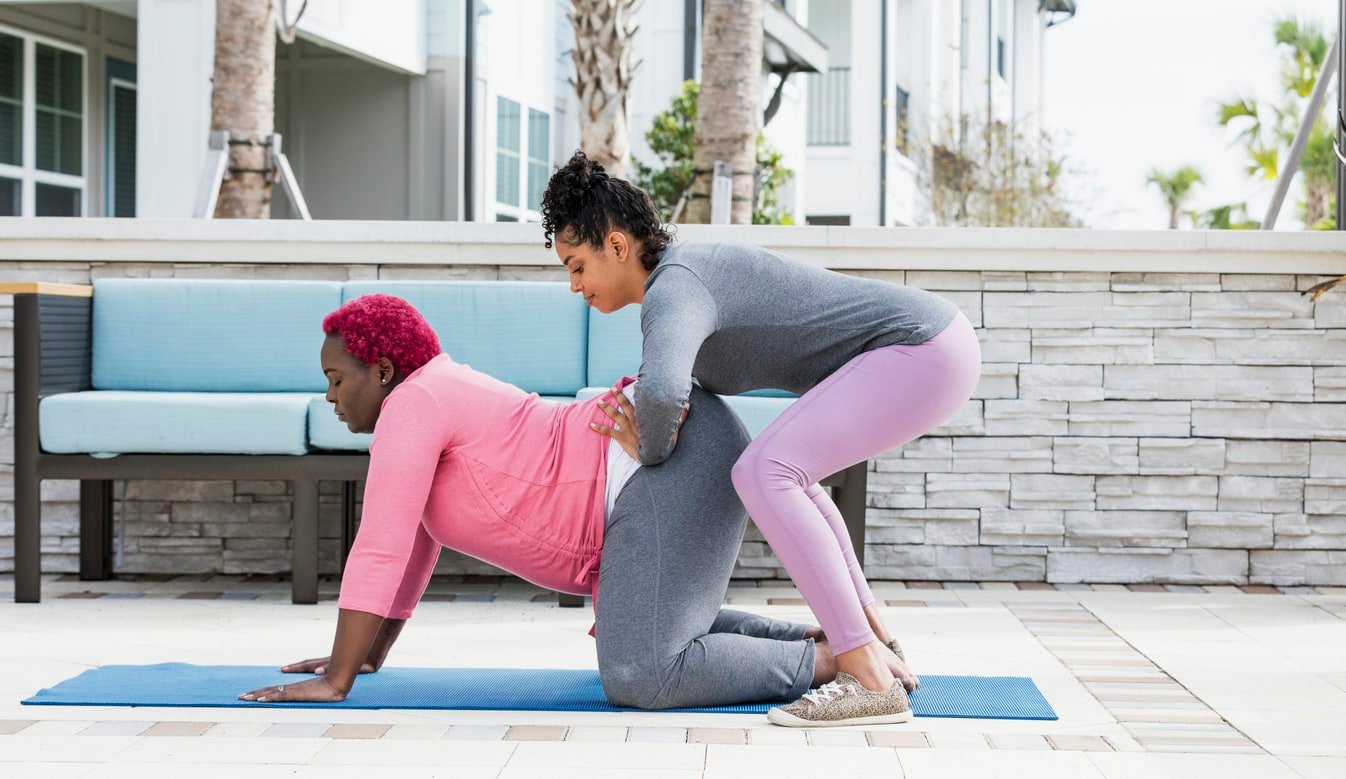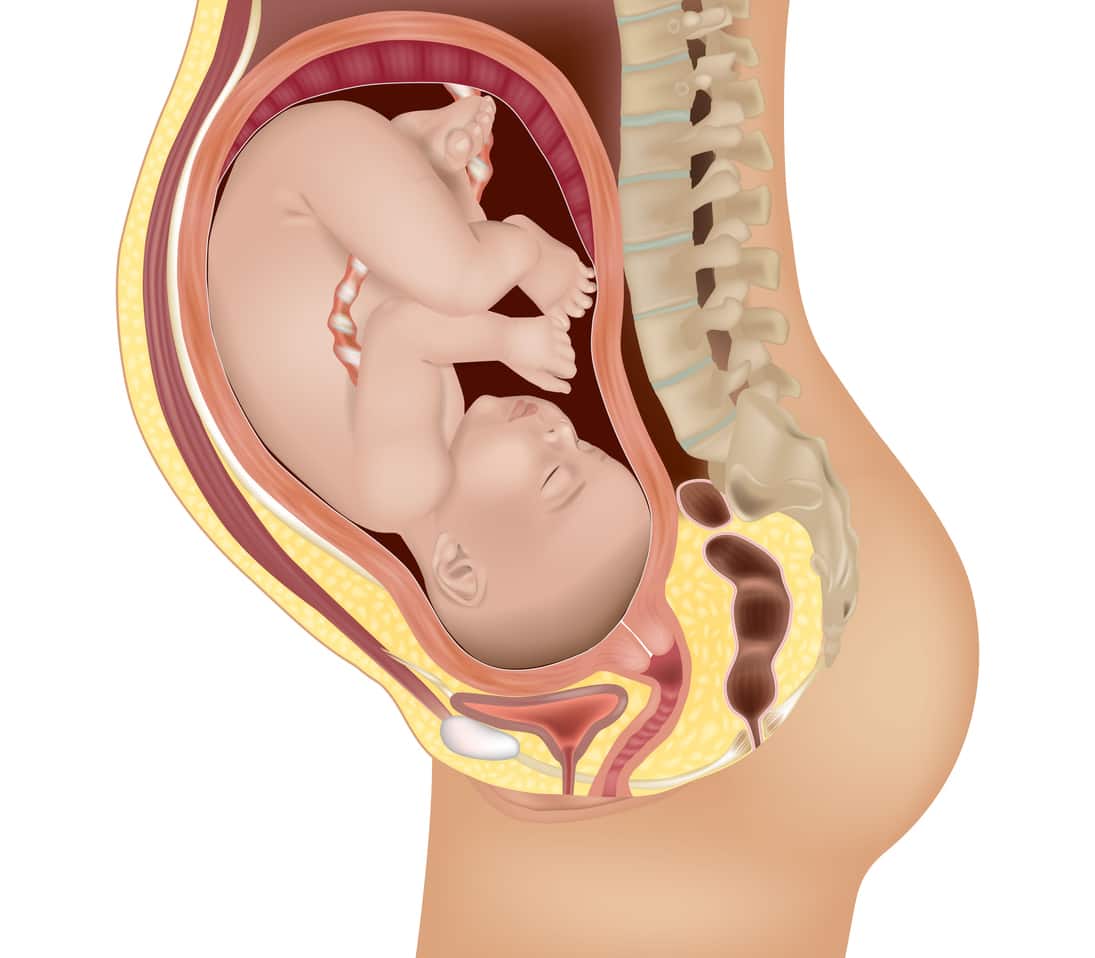
You’ve heard of it. You don’t want it. But you may not be able to avoid it. It’s back labor. Most women have heard of back labor from family or friends or experienced it themselves. It can be excruciating pain in the lower back during labor pains and doesn’t always let up between contractions. Fortunately, counter pressure during labor can reduce your pain and anxiety. There are two main types of counter pressure that you may find helpful. Let’s learn all about them.
What is Back Labor?
Most laboring women have at least some discomfort in their backs, but back labor is different. It’s most painful during a contraction, but constant pain can be present between contractions. Women who have experienced back pain describe it as:1,2,3
- Intensely painful
- It is more painful than regular labor pains, but it happens in the back
- Worsening with each contraction
- Not going away between contractions
- Pain with spasms in the lower back
- Located in the center of your lower back just above the tailbone
As a nurse midwife, the best description I’ve heard from a woman is that “it felt like a knife was in my back all the time, but then the knife was twisted during contractions. I didn’t even notice contraction pain in my abdomen.”
Causes of Back Labor
People commonly believe back labor is caused by your baby’s head position. Typically, a baby is born with its face and body toward your back. This position is called occiput anterior (OA). The occiput is the back of your baby’s head.1,2,3

When your baby is the other way up, it is called occiput posterior (OP) or “sunny side up.” Back pain can happen in this position when the back of your baby’s head pushes against your coccyx or tailbone and spine instead of their soft, flat face.1,2,3
About 15% to 32% of babies are in the occiput posterior position when labor starts. By the time of delivery, only about 5% to 8% are in this position. Most babies find their way into the correct position by the time they are born.2
Some studies indicate that other things besides your baby’s position may contribute to back labor. These factors include the following:2
- The shape of your pelvis
- Tight or loose pelvic ligaments and muscles
- Having a short torso with a long baby
- Bad posture
Remember, babies who are occiput posterior don’t always cause back labor. Also, back labor does not always result from how your baby is positioned.
How Does Counter Pressure Work?
There are several techniques to help with back pain in labor. Counter pressure is one of the most beneficial. It works in two ways.
First, when you experience firm pressure, endorphins are released. Endorphins are hormones made in your brain. These hormones bind to specific receptors in your brain and block pain sensations.8,9 Endorphins are your body’s natural painkillers.
A second way that counter pressure can help with back labor pain is that it relaxes the pelvis, muscles, and ligaments. Pressure to the lower back helps ease the area’s tension and tightness. Relaxation helps with pain but also makes room for your baby to get into the right position.3
Benefits of Counter Pressure During Labor
Researchers and mothers report multiple benefits of using counter pressure during labor for back pain. These benefits include:4,5,6,7
- Decreased back pain
- Reduced anxiety
- Increased relaxation
- Partner involvement
- Safety
A Step-By-Step Guide On How To Apply Counter Pressure
There are two main types of counter pressure for back pain during labor. One is direct pressure on the center of your lower back. The other involves squeezing your hips together. We will look at how to do each one. Alternating between these two pressure points for labor is often helpful.
Counter pressure is typically given to the sacrum during labor to relieve back pain. Here is how your support people can provide pressure correctly:3,9,10
- Position of mother: The mother should position themselves on their hands and knees, side lying, leaning over a bed or birthing ball, or leaning against a wall. Any position where she has support and can stay balanced when pressure is applied.
- Location on mother: Apply pressure to the mother’s sacrum. This is the triangular-shaped bone at the lower part of their back, right above the tailbone or coccyx.
- Position of support person: Position yourself where you can use the weight of your body to apply pressure to their lower back.
- Balance: It helps if you also hold the front of the mother’s hip bone to balance both of you.
- Counter pressure: Use your hand’s heel, palm, or fist to put steady, strong pressure on the painful area. A tennis ball also works well. Use your body weight to lean in and give pressure.
- Timing: Counter pressure is given from the start of each contraction until it ends.
- Communication: The key is to listen to the mother. They can tell you how much pressure feels the best and exactly what spot to push on.
Pro Tip
Use heat or ice and the counter pressure for even more pain relief.
How To Apply Counter Pressure With a Double Hip Squeeze
The double hip squeeze is also called the labor hip squeeze. One or two support people can use this technique. As the name suggests, squeeze both hips together to relieve lower back pain. Here are the steps your support people can take:3
- Position of mother: The mother should position herself where she can lean forward. She can stand, sit, be on hands and knees, or lean over a bed or birthing ball. Both hips need to be accessible.
- Location on mother: Find the right spot on the mother by imagining a line from the top of her hip bones to the top of her butt crack. The area outside the imaginary line is where you will apply pressure.
- Position of support person: Stand or kneel behind the mother and place the palms of your hands on the fleshy part of each butt cheek right outside the imaginary line. Your fingers should be pointing up and make the shape of a “W.”
- Balance: Maintain your balance by kneeling or standing with your legs apart on a solid surface.
- Hip squeeze: Use the flat or heel part of your hands to push up and in on both sides together toward the mother’s shoulders, giving steady pressure. Two people can provide pressure, one on each side. Usually, the stronger the pressure, the better.
- Timing: Apply pressure during contractions. Continue as long as it helps the laboring mother, or you are tired and need to switch out. Providing counter pressure can be exhausting.
- Communication: Listen to the mother to know what pressure feels good. They can also tell you if you need to adjust your hand position.
Pro Tip
The pressure helps flare the pelvis slightly, providing pain relief and allowing your baby to find the correct position.
Back labor pain can be relentless, but counter pressure during labor can be a lifesaver for women experiencing this excruciating pain. Counter-pressure techniques are excellent tools your support person can use to help you. By following the steps and communicating with the laboring mother, support people can give effective relief and comfort during labor.
from Baby Chick https://ift.tt/q6wSFOg
via IFTTT


0 Comments
Please ,
Don't enter span link ...